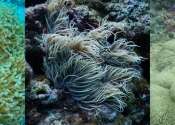Paleontologists flip the script on anemone fossils
Billions of sea anemones adorn the bottom of the Earth's oceans—yet they are among the rarest of fossils because their squishy bodies lack easily fossilized hard parts. Now a team of paleontologists has discovered that ...









